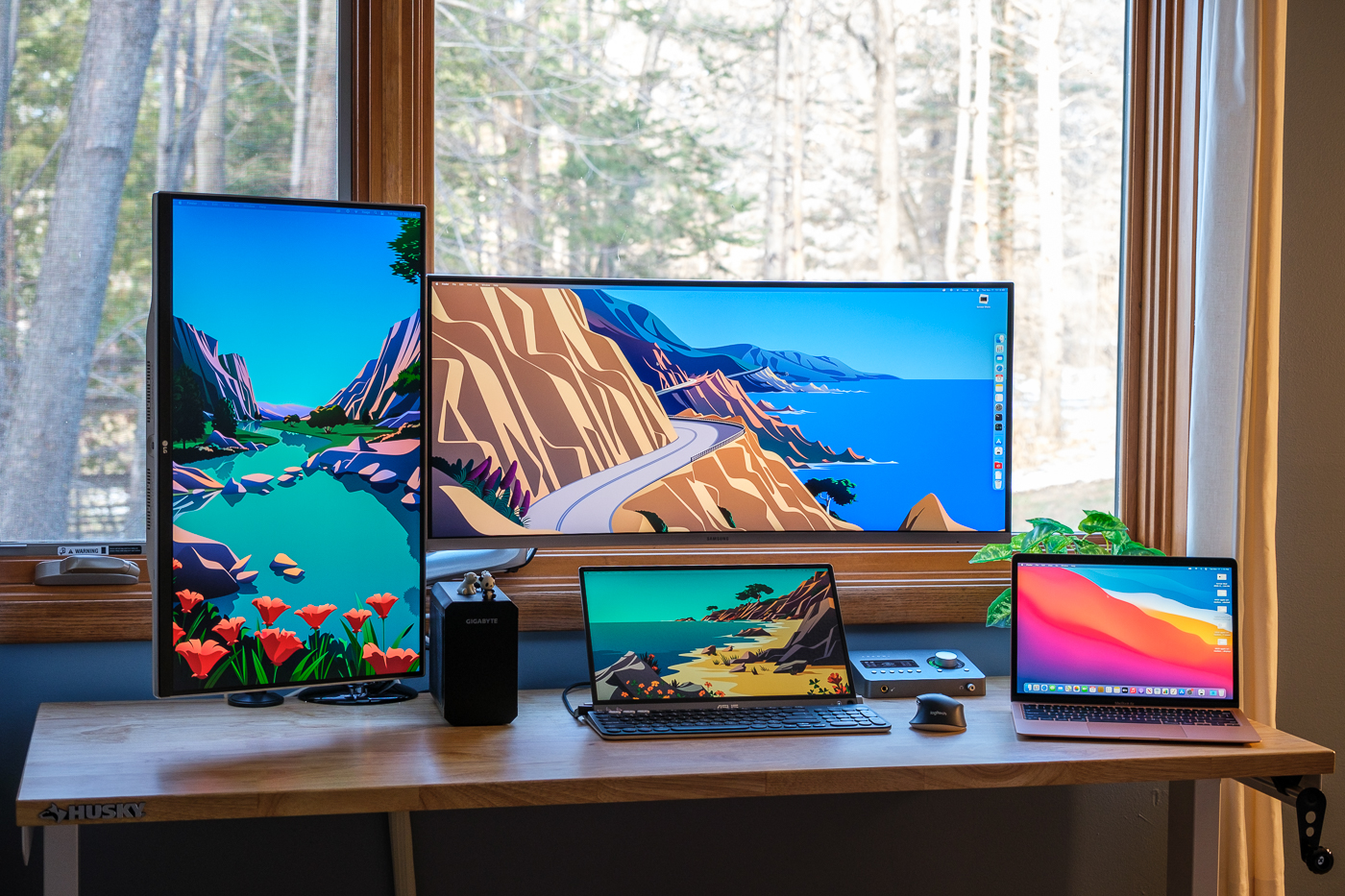It’s always about the trade-offs. Intel offered two controllers up until recently. A one-port bus controller, and a two-port bus controller. Since the controllers needed to be *very* close to the ports, and aren’t exactly small, Apple opted for the two-port bus controllers. It saves space on the logic board, and only requires 4x PCIe lanes to feed it, so you aren’t fighting for I/O from the CPU that is also needed for the 5300M in the 16” MBP.
They could have done 1-port-per-bus under Intel. They just decided not to. But the 16” MBP logic board looks pretty crammed as it is, so I’m not terribly surprised here.
Moving to Apple Silicon gives them more options. They don’t have to ration PCIe lanes if they don’t want to. Their GPU design may give them the ability to free up lanes and I/O that would normally go to a dGPU in the 16” MBP. But there’s still the trade offs. 4 integrated controllers means 4 retimers and more I/O pins dedicated to it. There are advantages to this, but my use of TB doesn’t really benefit from it. About the only devices capable of saturating TB are PCIe SSDs, some RAIDs, and eGPUs. With DSC in the mix now, high resolution displays going forward will likely use less bandwidth than the LG 5K Ultrafine. It depends a bit on how common SSDs and RAIDs are in pro workflows, I bet.
The question really winds up being: What does Apple think Pros want/need? What trade offs in the “M1X” design are they willing to make to cater to that vision? I’m honestly not very sure how this will play out. Apple certainly has data on how the four port MacBook Pros get used, and I kinda wish I had access to it.
To be honest, that article is also doing a lot of lifting as marketing copy for their new Thunderbolt hub. Those sorts of hubs weren’t feasible until recently, as it requires the new JHL8440 controller released in the last few months. This new controller is meant for docks, but is also the first controller that supports 4 TB ports.
This is also why docks up to this point only ever had 1 or 2 TB ports, depending on which controller they used.



